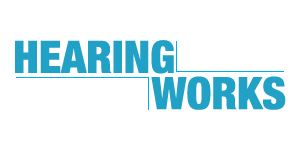You’ve probably heard that you shouldn’t use cotton swabs to clean out your ears, but what should you do if they become blocked? Earwax, otherwise known as cerumen, is a thick substance your ear produces in order to protect itself. It generally moves outward in the ear canal from the movement of your jaw when talking or chewing and the natural migration of the skin tissue. Sometimes the ear produces too much wax, or something prevents it from moving out, producing a blockage in the ear canal. This can be especially common in older people, those who wear hearing aids, and people with developmental disabilities.
Symptoms of Earwax Blockage
When the earwax buildup is blocking the ear canal, this is called impaction. The symptoms of impaction can include:
- Ringing or fullness in the ear
- Impaired hearing
- Earache or sharp pain in the ear
- Dizziness or coughing
- Bad odor that comes from the affected ear
Ways to Remove Impaction
The safest way to remove excess earwax is to let a doctor do it. Doctors have special instruments specifically designed to remove earwax blockage. If you choose to try removing it at home, stay with proven, safe methods so you don’t make the condition worse. Never try to remove wax yourself if you know that there is a perforation of the eardrum!
Start by wiping the inside of your ear with a warm, damp cloth. This will remove any wax that’s built up around the outside of the ear canal.
Use an over-the-counter earwax removal kit. These kits include softening agents that help the wax to move out of your ear. They can contain baby oil, glycerine, hydrogen peroxide, or saline solution. Follow the directions on the kit by putting the correct number of drops in the affected ear, then waiting the correct amount of time. Tip your head over to allow the ear to drain.
One additional method is to rinse out your ear canal using a syringe. This must be done very gently and is best done after using softening agents. Warm the solution to body temperature to prevent dizziness or pain during the process.
Earwax and Hearing Aids
Your hearing aids contain a wax guard that helps prevent wax from getting into the electronics. Earwax is one of the most common reasons for hearing aid failure, so it’s important that you clean the wax guard regularly. Wipe the hearing aids with a clean, dry cloth, use the provided brush to remove wax, and replace the wax filter when needed.
Home care is good in a pinch, but professional cleaning is best for keeping your hearing aids in working order. Contact us to make an appointment.

